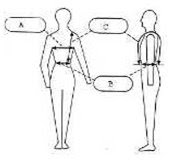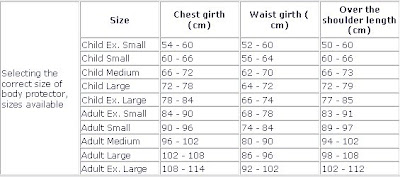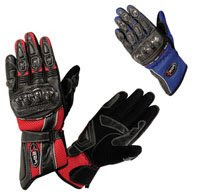How to select the correct size?
Begin by taking the following measurements:(See Diagram & Size Chart below)
• Waist
• Chest
• Waist to waist (taking the tape measure from the front waist, up over the chest and shoulder and down the back to the waist).
Use the size chart in the user instructions (attached to all new BETA Standard garments) to find the correct size. If the measurements are at the top or bottom of a size range, try to find the two closest sizes to establish which is more comfortable.
Manufacturers offer a special sizes service or even made-to-measure body protectors. If one cannot be found that fits and is comfortable, it is possible to order one that will fit and is comfortable.
Points to check on fitting:
The body protector should be tried on over light clothing. Check that is comfortable to wear in all simulated riding positions. The garment should fit securely and reasonably tightly to avoid movement during activity and to ensure that it is in place in the event of an accident.
Put on the selected body protector. Adjust it to a snug fit. Use the shoulder closures to make fine adjustments to the fit around the shoulders. Do up the second flap of the shoulder closure. Pull the waist flaps of the back panel forward and press them onto the Velcro of the front panel.
Tighten one then the other to get a tight fit. Adjust the length of the waist strap and do it up. Ensure that all hooks fastening at each closure is in contact with loop material. Check the overall fit is snug, and that no RED VELCRO is exposed. If it is the protector is too small. Try the next larger size.
Women may find the use of a larger size of front panel than back panel enables a more comfortable fit to be achieved.
Panels from adjacent sizes are compatibleIn garments where the shoulder protector is separate; you may find that the garment can be adjusted at the shoulder.
 Dimension A: Chest girth
Dimension A: Chest girthDimensionB: Waist girth
Dimension C: Waist to waist length measured over the shoulder
SHOULDER PROTECTORS (SP's)
Riders often suffer injuries to other parts of the body when falling on the shoulder. The new Standard is designed to test against a fall on the point of the shoulder which is stronger than the rib cage and a different shape. It is a separate Standard for that reason. BP's may incorporate a SP as an integral part of the garment, but the SP will still be subject to a different test. Where Shoulder Protectors are an integral part of the garment, they should never be removed as by doing so the benefits of the garment are substantially reduced.

Regards,











